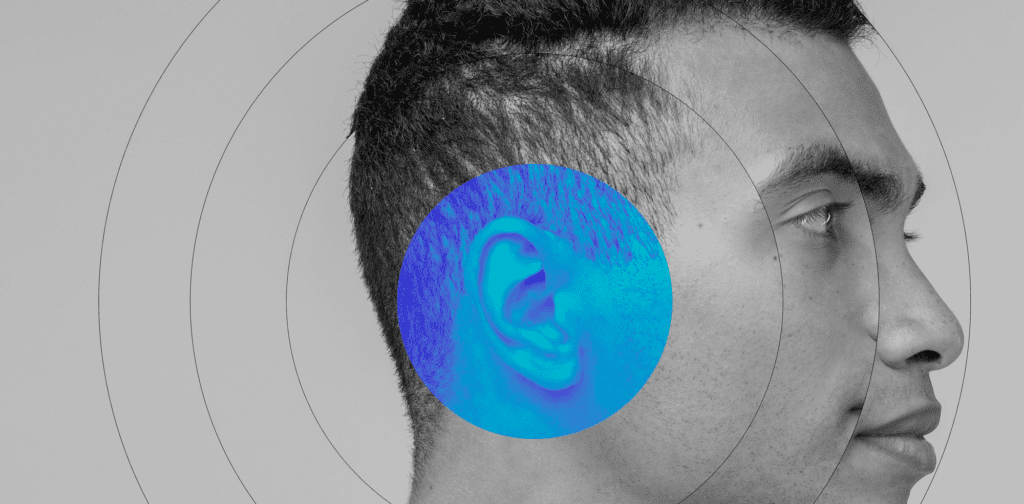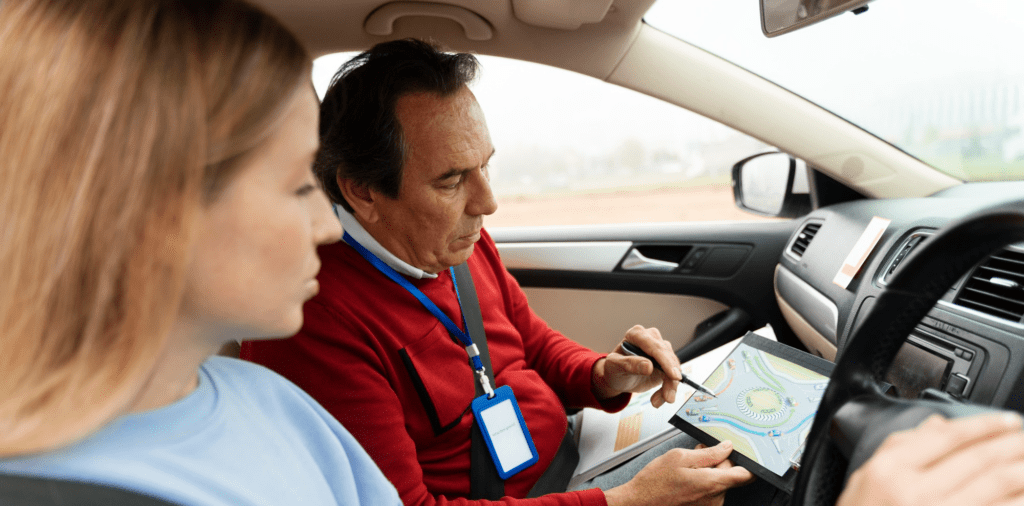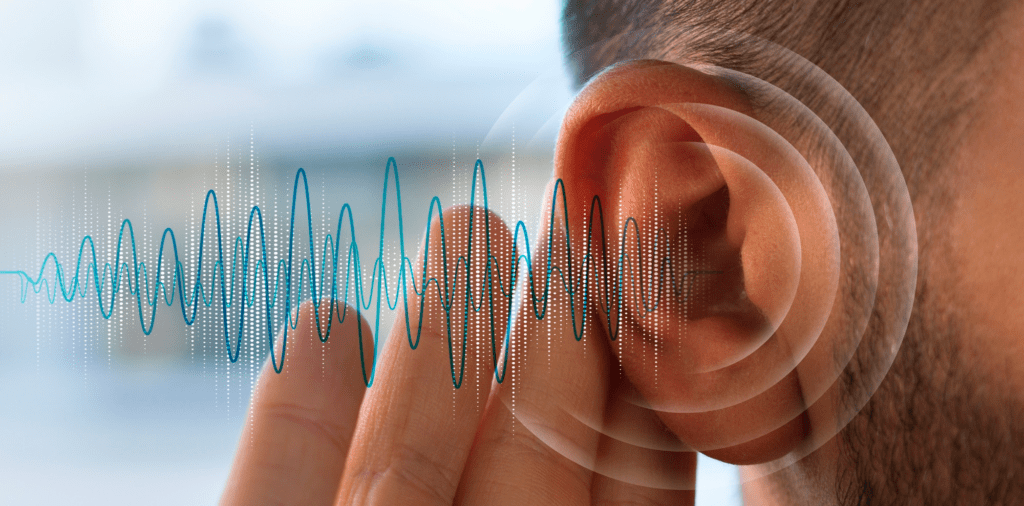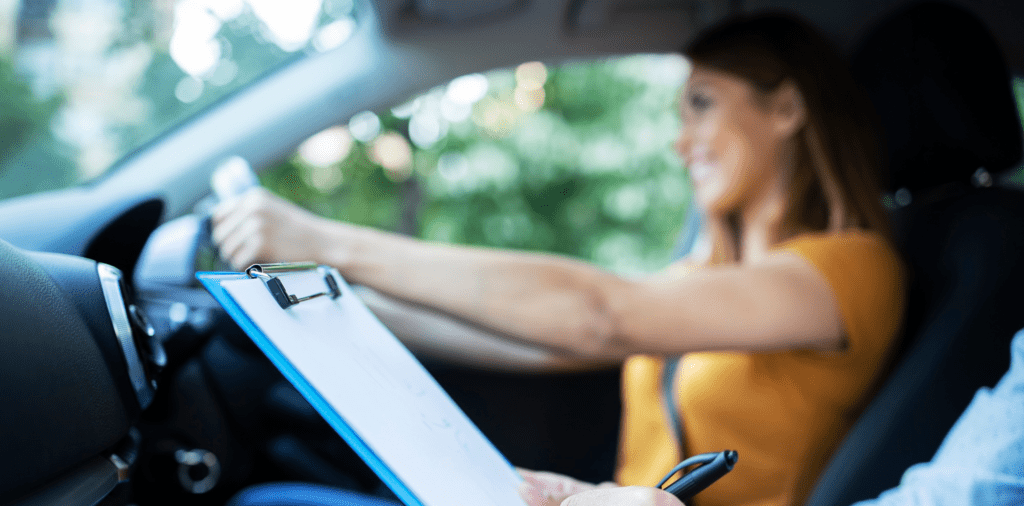
Deafness or hearing impairment is a condition that affects millions of people worldwide, including many in the UK.
For those who are learner drivers, questions often arise about whether they can legally and safely drive if they have a hearing impairment.
In this comprehensive article, we will explore the legal regulations, requirements, and success stories surrounding deaf drivers in the UK, as well as the necessary steps to notify the DVLA if you’re deaf.
Am I Allowed to Drive if I’m Deaf or My Hearing is Impaired?
Legal Regulations in the UK
In the UK, the ability to drive is not restricted by deafness or hearing impairment.
The law recognises that people with hearing impairments can be just as competent drivers as those without.
The Equality Act 2010 ensures that individuals with disabilities are not discriminated against, and this includes the right to hold a driving licence.

Requirements for a Driving Licence
To obtain a driving licence in the UK, all applicants must meet specific criteria. This includes passing the theory test and the practical driving test.
There are no additional tests or requirements solely based on hearing ability. However, the DVLA does need to be informed of any medical conditions that may affect driving.
Hearing Impairment and Driving Competency
Studies have shown that deaf drivers can be as competent, if not more so, than hearing drivers. Many deaf individuals develop heightened awareness of their surroundings and rely more on their visual senses.
This can lead to increased attentiveness and caution while driving. Additionally, modern vehicles equipped with visual alerts and vibrating devices can help deaf drivers stay informed of essential information.
Comparisons with Other Countries
Different countries have varying regulations regarding deaf drivers. In the United States, for instance, deaf individuals can drive in all states, though specific regulations may vary.
Some states require additional mirrors or assistive devices. In Australia, deaf drivers are also allowed to drive, with similar requirements to the UK regarding notifying the relevant authorities.
Do I Need to Tell the DVLA if I’m Deaf?
DVLA Notification Requirements
Yes, if you are deaf or have a hearing impairment, you are required to notify the DVLA.
This is important for ensuring that your driving licence is accurate and that any necessary adaptations can be made to support your driving.

Medical Declarations
When applying for or renewing a driving licence, you must declare any medical conditions, including hearing impairments.
The DVLA uses this information to assess your ability to drive safely. In most cases, being deaf or having a hearing impairment does not prevent you from obtaining a licence.
Impact on Your Driving Licence
Notifying the DVLA about your hearing impairment typically has minimal impact on your driving licence.
The primary goal is to ensure that all drivers on the road are safe. If any adaptations or special considerations are needed, the DVLA will inform you.
It’s crucial to be honest in your declaration to avoid potential legal issues or penalties.
Confidentiality and Data Protection
The DVLA takes data protection and confidentiality very seriously. Your medical information is kept secure and is only used to assess your fitness to drive.
It is not shared with third parties without your consent. This ensures that your privacy is maintained while complying with legal requirements.
How to Notify the DVLA
Notifying the DVLA of your hearing impairment is straightforward. You can do this online through the DVLA’s website or by filling out a medical questionnaire and sending it by post.
It’s important to provide accurate and complete information to avoid delays in processing your licence.
Taking Driving Lessons
Finding an Instructor Experienced with Deaf Students
When looking for a driving instructor, it’s crucial to find someone experienced in teaching deaf students.
These instructors will have the skills and understanding necessary to communicate effectively and provide the best learning environment.


Organisations such as the Institute of Advanced Motorists (IAM) and the Driving Instructors Association (DIA) can help you find qualified instructors.
Communication Methods During Lessons
Effective communication is key during driving lessons, especially for deaf learners. Many instructors use a combination of sign language, lip-reading, and written notes.
It’s important to discuss your preferred method of communication with your instructor beforehand to ensure a smooth learning process.

Using Visual and Tactile Signals
Visual and tactile signals play a vital role in driving lessons for deaf students. Instructors may use hand signals, light indicators, or even vibrating devices to convey instructions.
These signals help in situations where verbal communication is not possible, ensuring that the learner can focus on the road and the lesson.
Adapting Lesson Plans for Deaf Learners
Lesson plans may need to be adapted to suit the needs of deaf learners. This could involve more frequent stops for discussion, using visual aids such as diagrams, or incorporating simulators that provide visual and tactile feedback.
Adapted lessons ensure that all aspects of driving are covered comprehensively.
Feedback and Progress Tracking
Regular feedback and progress tracking are essential for any learner driver. For deaf learners, feedback can be given through written reports, visual demonstrations, or using digital apps that track progress.
This allows learners to understand their strengths and areas for improvement clearly.
What Challenges Might I Face as a Deaf Driver?
Limited Auditory Cues
One of the main challenges deaf drivers face is the lack of auditory cues. Sounds such as horns, sirens, or even the noise of other vehicles can provide important information.

Without these cues, deaf drivers must rely more on their visual senses and be extra vigilant.
Increased Reliance on Visual Information
With limited auditory input, deaf drivers need to rely heavily on visual information.
This means paying closer attention to mirrors, traffic signs, and the behaviour of other road users. Enhanced peripheral vision and frequent mirror checks become vital skills.
Dealing with Emergency Vehicles
Recognising and responding to emergency vehicles can be more challenging for deaf drivers. Since they cannot hear sirens, they need to be particularly observant for flashing lights.
Some vehicles can be fitted with visual alert systems that notify the driver of approaching emergency vehicles through lights or vibrations.
Coping with Road Noise and Vibrations
Although deaf drivers do not hear road noise, they can feel vibrations through the steering wheel and the car’s chassis.
Learning to interpret these vibrations can provide valuable information about road conditions and vehicle performance. For instance, vibrations might indicate a flat tyre or uneven road surfaces.
Using Assistive Technology and Devices
There are various assistive technologies and devices designed to help deaf drivers. Visual alert systems, vibrating steering wheels, and GPS devices with visual notifications can make driving safer and more comfortable.
Many modern cars come with advanced driver assistance systems (ADAS) that provide visual and tactile feedback for lane departures, collisions, and other critical situations.
Driving as a deaf individual comes with its unique set of challenges, but with the right adaptations, support, and technology, these challenges can be effectively managed.
Deaf drivers can be just as safe and proficient as their hearing counterparts, enjoying the independence and mobility that driving offers.
Making the Theory Test Accessible
Availability of British Sign Language (BSL) Interpreters
To ensure that the theory test is accessible to deaf individuals, British Sign Language (BSL) interpreters are available.
These interpreters can assist during the test to translate questions and instructions, ensuring that candidates fully understand the material.

When booking your theory test, you can request a BSL interpreter through the Driver and Vehicle Standards Agency (DVSA).
Using a sign language interpreter
You can take a British Sign Language (BSL) interpreter with you. They must be at least 16 years old.
Your driving instructor can be your interpreter.
You need to arrange your own interpreter and pay any fees that they charge. You can claim the cost back after your test.
Using Visual and Written Aids
The theory test includes visual and written aids to accommodate deaf candidates. The questions are presented in written form, and visual aids such as diagrams and animations are used to illustrate scenarios.
This approach helps ensure that all candidates, regardless of hearing ability, can understand and respond to the questions accurately.
Practice Materials and Resources
Preparing for the theory test is crucial, and there are many practice materials and resources available for deaf learners.
These include BSL-translated theory test books, online practice tests with visual aids, and educational videos.
Utilising these resources can help you become familiar with the test format and content, increasing your chances of success.
Booking an Accessible Theory Test
When booking your theory test, it’s essential to inform the DVSA of your hearing impairment so they can provide the necessary accommodations.
You can do this online or by phone. Ensure you request a BSL interpreter if needed and confirm any other accommodations that may assist you during the test.
Tips for Deaf Test Takers
- Prepare thoroughly using practice materials tailored for deaf learners.
- Familiarise yourself with the format of the test and the types of questions asked.
- Request a BSL interpreter well in advance to ensure availability.
- Use visual aids and diagrams to understand the scenarios presented in the questions.
- Stay calm and focused during the test, taking your time to read and understand each question.
How Does the Driving Test Work if You’re Deaf?
Booking a Driving Test with Accommodations
When booking your driving test, it’s important to inform the DVSA about your hearing impairment so that appropriate accommodations can be made.

You can request specific adjustments, such as having an interpreter present or using visual signals, to ensure that you can effectively communicate with the examiner.
Communication During the Test
Effective communication between the candidate and the examiner is crucial during the driving test.
Examiners are trained to work with deaf candidates and can use written instructions, hand signals, and other visual cues to convey directions.
It’s beneficial to discuss your preferred communication methods before the test begins.
Use of Interpreters
During the driving test, you are allowed to have a BSL interpreter in the car with you.
The interpreter can translate the examiner’s instructions into sign language, ensuring you understand what is required at each stage of the test.
It’s important to arrange for the interpreter when booking the test and confirm their availability.
Evaluating Visual Awareness and Reaction Times
The driving test for deaf candidates places a significant emphasis on visual awareness and reaction times.
Examiners will assess your ability to respond to visual cues, such as traffic signals, road signs, and the movements of other road users.
Demonstrating good visual awareness and quick reactions is crucial to passing the test.
Tips for Deaf Test Takers
- Discuss communication methods with the examiner before the test starts.
- Use an interpreter if needed to ensure clear understanding of instructions.
- Focus on visual cues and stay vigilant to your surroundings.
- Practice driving with someone who understands your communication needs.
- Stay calm and composed, remembering that the examiner is there to help you demonstrate your driving abilities.
By understanding the accommodations available and preparing thoroughly, deaf individuals can successfully navigate both the theory and practical driving tests.
With the right support and resources, you can achieve your goal of becoming a licensed driver, enjoying the freedom and independence that driving offers.
Support and Resources for Deaf Drivers
Organisations and Charities Offering Assistance
Several organisations and charities in the UK are dedicated to supporting deaf drivers.
These organisations provide a wide range of services, including driving lessons, advocacy, and community support. Some notable organisations include:
- Royal Association for Deaf People (RAD): Offers support services and resources for deaf individuals, including driving assistance.
- Action on Hearing Loss: Provides information and advocacy for people with hearing impairments.
- British Deaf Association (BDA): Advocates for the rights of deaf individuals and offers various support services, including driving-related assistance.
Online Communities and Forums
Online communities and forums are invaluable resources for deaf drivers. These platforms allow individuals to share experiences, offer advice, and find support from others who understand their unique challenges. Popular online communities include:
- Deaf Community UK on Facebook: A group where deaf individuals can connect and share information, including driving tips and resources.
- DeafUK: An online forum where users discuss various topics, including driving and transport issues.
Technology and Apps for Deaf Drivers
Technology and apps have revolutionised the way deaf drivers navigate the roads. Numerous tools are available to enhance safety and convenience, such as:
- Visual alert systems: Devices that alert drivers to emergency vehicles and other important sounds through visual or tactile signals.
- GPS apps with visual cues: Navigation apps like Waze and Google Maps offer visual and written directions, reducing the reliance on auditory instructions.
- Driver assistance systems: Modern cars often come equipped with features like lane departure warnings and collision alerts, which provide visual and tactile feedback.
Training Programs and Workshops
Various training programs and workshops are designed to help deaf drivers improve their skills and confidence on the road.
These programs often include specialised driving lessons, defensive driving techniques, and educational sessions on using assistive technology. Some notable programs include:
- Driving Mobility: Provides assessments and training for drivers with disabilities, including those with hearing impairments.
- Deaf Awareness Training: Workshops aimed at driving instructors and examiners to improve their understanding and support of deaf learners.
Legal and Advocacy Resources
Understanding your legal rights and having access to advocacy resources is crucial for deaf drivers. There are several avenues available for legal assistance and advocacy:
- Citizens Advice: Offers free, confidential advice on a range of issues, including driving and transport rights for deaf individuals.
- Equality and Human Rights Commission (EHRC): Provides information and support regarding your rights under the Equality Act 2010.
- Legal advice services: Many organisations, such as Action on Hearing Loss, offer legal advice and advocacy services to help deaf drivers navigate any legal challenges they may face.
By utilising these support systems and resources, deaf drivers can enhance their driving experience, overcome challenges, and confidently navigate the roads.
Whether it’s through community support, technology, or legal advocacy, there are numerous ways to ensure that deaf drivers have the tools and assistance they need to succeed.
Frequently asked questions
Yes, deaf people can legally drive in the UK. The law recognises that deaf individuals can be just as competent as hearing drivers.
Yes, you need to inform the DVLA if you are deaf or have a hearing impairment.
This ensures your driving licence is accurate and any necessary adaptations can be made.
No, being deaf does not affect your ability to obtain a driving licence. However, you must inform the DVLA and may need to make some adaptations to your driving approach.
Yes, there are driving instructors who specialise in teaching deaf students. You can find them through organisations such as the Institute of Advanced Motorists (IAM) and the Driving Instructors Association (DIA).
Deaf drivers communicate with their instructors using sign language, lip-reading, written notes, and other visual aids.
Yes, you can use a BSL interpreter during your driving test. You need to request this accommodation when booking your test with the DVSA.
Adaptations for deaf drivers can include visual alert systems, vibrating steering wheels, and using assistive technology such as GPS devices with visual notifications.
When booking your theory test, inform the DVSA of your hearing impairment and request any necessary accommodations, such as a BSL interpreter.
Deaf drivers should rely on visual cues such as flashing lights to identify emergency vehicles. Some vehicles can be equipped with visual alert systems to assist with this.
Yes, there are several online communities and forums where deaf drivers can share experiences, advice, and support, such as Deaf Community UK on Facebook and DeafUK forum.
Assistive technologies for deaf drivers include visual alert systems, vibrating steering wheels, GPS apps with visual cues, and driver assistance systems that provide visual and tactile feedback.
No, you do not need to retake your driving test if you become deaf, but you must inform the DVLA of your change in hearing ability.
Yes, deaf drivers can attend regular driving schools. It’s beneficial to choose a school with experience in teaching deaf learners or one that is willing to make necessary adaptations.
If you face discrimination as a deaf driver, you can seek assistance from organisations like the Equality and Human Rights Commission (EHRC) and Citizens Advice. They provide support and can help you understand your rights under the Equality Act 2010.



